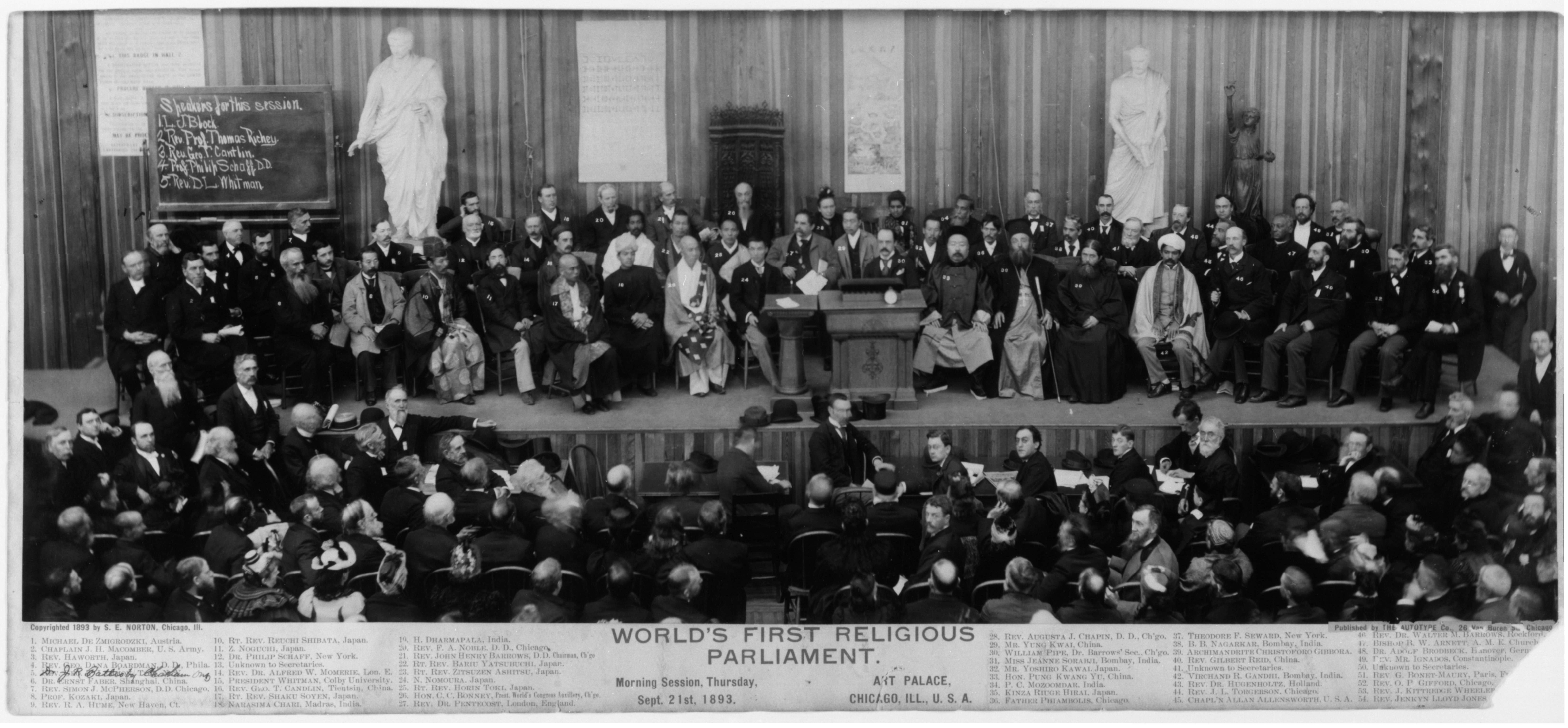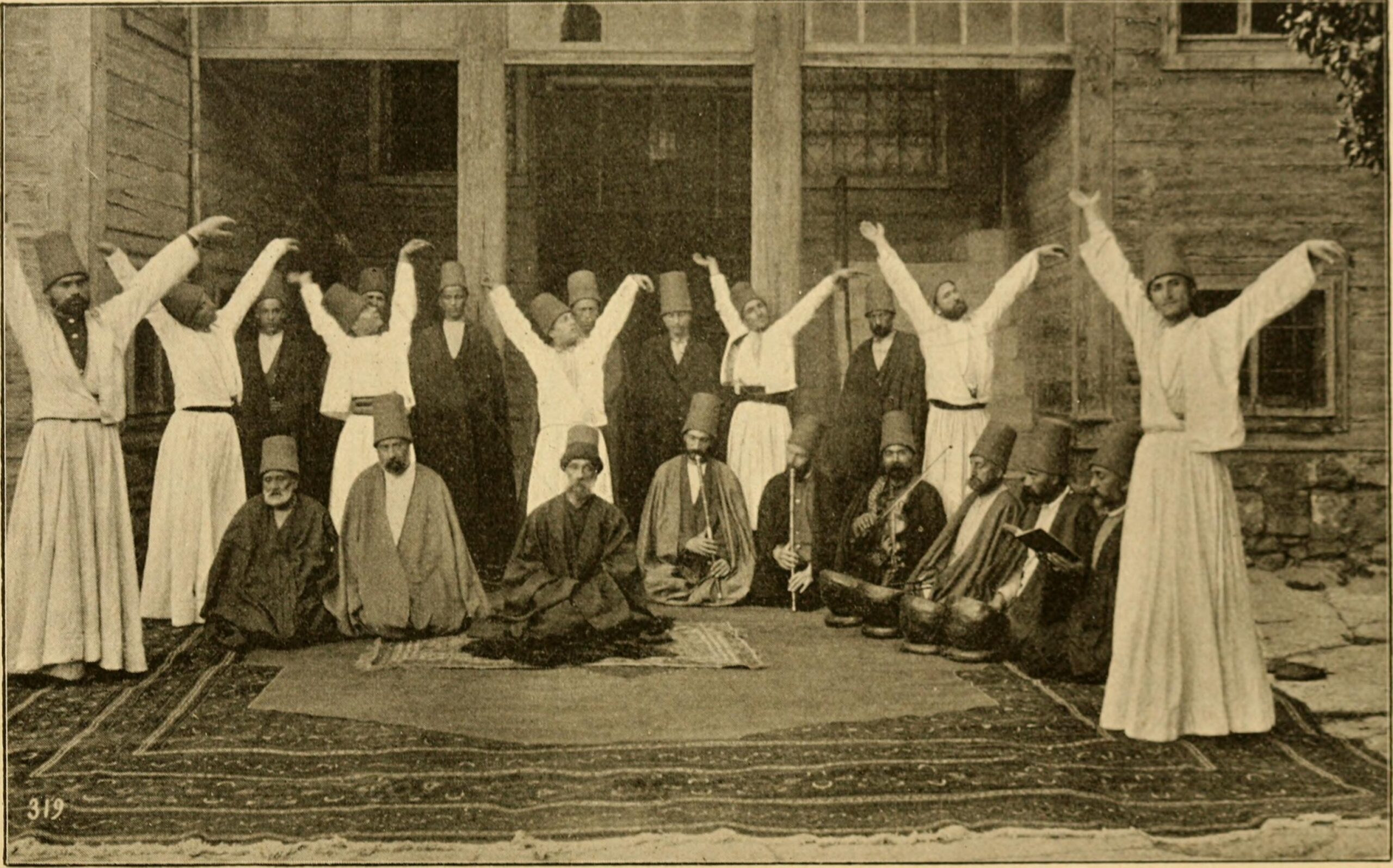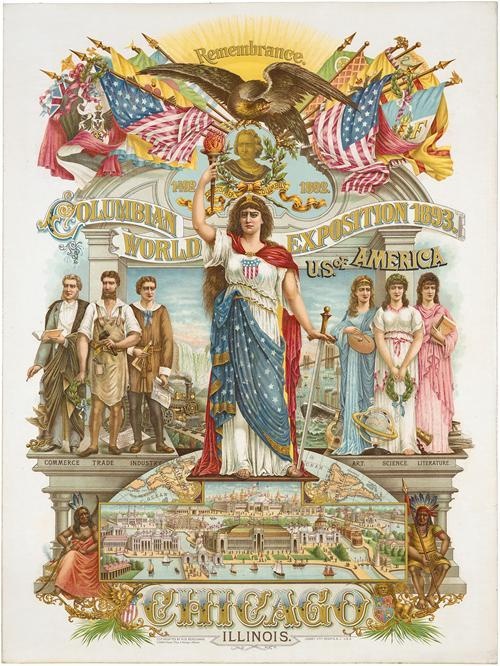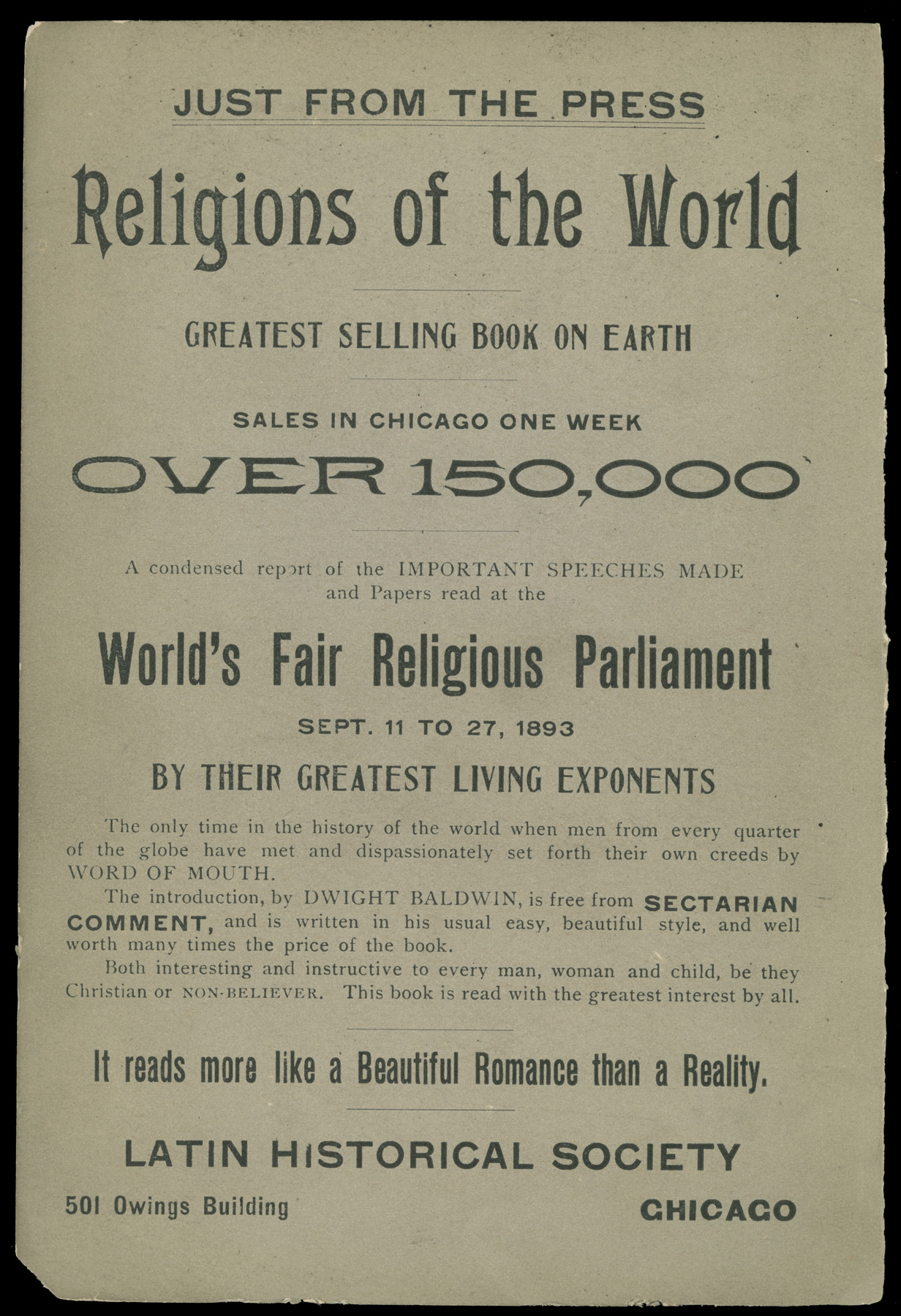Before the Parliament

The idea for a World’s Parliament of Religions came from the Hon. Charles Carroll Bonney, a well-known and successful judge on the Supreme Court of Illinois. As an active member of the New Jerusalem Church (also known as Swedenborgian), Bonney had who had a deep conviction about the harmony of religions. He saw the World’s Parliament as “an epoch-making event in the history of human progress, marking the dawn of a new era of brotherhood and peace.” Bonney’s vision reflected the vision of the Columbian Exposition as an exalted celebration of human progress, but it gave it a distinctly religious focus. Bonney hoped that the Parliament would not only bring religious leaders together in an expression of mutual sympathy, but would “unite all religion against all irreligion” (Bonney 1895: 325). This had particular significance for Bonney and other religious leaders who felt both confident and overshadowed by the extraordinary technological prowess that characterized other aspects of the Exposition. To say, as some did, that “Religion is the greatest fact of History,” was not something that one could merely assume. Bonney and others hoped that the Parliament would be a visible demonstration of the importance of religion as a global force amidst the instability of late nineteenth-century modernity.
To help realize his goal, Bonney called on Rev. John Henry Barrows of the First Presbyterian Church of Chicago as the chair of the organizing committee. Barrows himself had no doubt about the superiority of Christianity, but was a talented and tireless organizer, and he kept voluminous records. Barrows recruited a distinguished group of religious leaders, including a wide variety of American Christian denominations, but also a distinguished rabbi, Dr. E. G. Hirsch of Chicago’s Sinai Temple and Professor of Rabbinic Literature at the University of Chicago. Barrows and his committee immediately began to reach out through the U.S. State Department and through a variety of religious organizations to religious leaders elsewhere in the world.

Initially Barrows thought that the idea of a World Parliament of Religions was entirely new, but he soon learned otherwise. Mr. H. Dharmapala of Calcutta, the General Secretary of the Maha Bodhi Society and a representative of the “Southern Buddhist Church” of Ceylon (now Sri Lanka), pointed out that “[t]wenty centuries ago, just such a congress was held in India by the great Buddhist Emperor Asoka, in the city of Pataliputra, modern Patna, and the noblest lessons of tolerance therein enunciated were then embodied in lithic records of his extensive empire” (Barrows, vol. 1, p. 8). President William Fairfield Warren of Boston University wrote to the leaders of the Parliament that he that he had once imagined holding a great convention in Tokyo to discover, if possible, the “Perfect Religion” (Barrows, vol. 1, p. 9). He noted how important it was not merely to present the ideas of other religious traditions, but to hear the “living word of living teachers” so that “the whole world may pause and listen” (p. 9). In the end, it was the presence of living teachers, some from well-known religious traditions and some from traditions that were scarcely known outside their own countries that made the Parliament such a vital and influential event.
Early in June, 1891, Barrows and his committee sent out a “Preliminary Address” calling attention to what they called the creative power of religion and inviting representatives “the great historic faiths” to join them “in showing what are the supreme truths and what light religion can afford to the problems of the time” (p. 10). The Committee’s invitation had the stamp of Barrows’ Christian convictions and echoed the language of Christian scripture, but it was meant to convey an inclusive spirit. “Convinced” it said, “that of a truth God is no respecter of persons, but that in every nation he that feareth him and worketh righteousness is accepted of him, we affectionately invite the representative of all faiths to aid us in presenting to the world at the Exposition of 1893, the religious harmonies and unities of humanity, and also in showing forth the moral and spiritual agencies which are at the root of human progress” (Barrows p.10).



Full text of the “Preliminary Address”:
Believing that God is and that he has not left himself without witness; believing that the influence of Religion tends to advance the general welfare, and is the most vital force in the social order of every people, and convinced that of a truth God is no respecter of persons, but that in every nation he that feareth him and worketh righteousness is accepted of him, we affectionately invite the representatives of all faiths to aid us in presenting to the world at the Exposition of 1893,the religious harmonies and unities of humanity, and also in showing forth the moral and spiritual agencies which are at the root of human progress. It is proposed to consider the foundation of religious Faith, to review the triumphs of Religion in all ages, to set forth the present state of Religion among the nations and its influence over Literature, Art, Commerce, Government, and the Family Life, to indicate its power in promoting Temperance and Social Purity and its harmony with true Science, to show its dominance in the higher institutions of learning, to make prominent the value of the weekly rest-day on religious and other grounds, and to contribute to those forces which shall bring about the unity of the race in the worship of God and the service of man.
The invitation presented a challenge to religious leaders around the world. The Parliament offered a rare opportunity to speak on a global stage about their religious convictions, but could they accept Barrows’ inclusive orientation and his scarcely concealed assumption that his Christian tradition provided what Warren had called the “Perfect Religion”? Some, like the Archbishop of Canterbury, E. W. Benson, rejected the invitation outright, saying: “Christianity is the one true religion.” Others, like the members of the national organization of Buddhists in Japan agonized over the ambiguities of the invitation. What might be gained and what might be lost by presenting one’s own cherished convictions in such a public setting?
Some Americans had already found the religious traditions of Asia to be important sources of inspiration. Early in the nineteenth century, as translations of Asian religious texts became widely available, Ralph Waldo Emerson and Henry David Thoreau incorporated an appreciation of Asia into the emerging tradition of American Transcendentalism. Thoreau gave an indelible image of the influence of Asian traditions in America (and vice versa), when he imagined that ice cut from the pond in front of his cabin on Walden Pond would be transported to India and flow together with the water of the Ganges.
Thus it appears that the sweltering inhabitants of Charleston and New Orleans, of Madras and Bombay and Calcutta, drink at my well. In the morning I bathe my intellect in the stupendous and cosmogonal philosophy of the Bhagvat Geeta, since whose composition years of the gods have elapsed, and in comparison with which our modern world and its literature seem puny and trivial, and I doubt if that philosophy is not to be referred to a previous state of existence, so remote in its sublimity from our conceptions. I lay down the book and go to my well for water, and lo! there I meet the servant of the Brahmin, priest of Brahma and Vishnu and Indra, who still sits in his temple on the Ganges reading the Vedas, or dwells at the root of a tree with his crust and water jug. . . . The pure Walden water is mingled with the sacred water of the Ganges (from the conclusion of the chapter in Walden on “The Pond in Winter”).
Ralph Waldo Emerson demonstrated a similar fascination with Asian traditions in his poem “Brahma,” His first verse echoes a well-known verse in the Bhagavad Gita:
Brahma
by Ralph Waldo Emerson
If the red slayer think he slays,
Or if the slain think he is slain,
They know not well the subtle ways
I keep, and pass, and turn again.
Far or forgot to me is near;
Shadow and sunlight are the same;
The vanished gods to me appear;
And one to me are shame and fame.
They reckon ill who leave me out;
When me they fly, I am the wings;
I am the doubter and the doubt,
I am the hymn the Brahmin sings.
The strong gods pine for my abode,
And pine in vain the sacred Seven;
But thou, meek lover of the good!
Find me, and turn thy back on heaven.
In the decades before the Parliament, it was not uncommon for Americans to travel to Asia and encounter Asian traditions in all their richness and complexity. In May, 1880, Col. Henry Steel Olcott, with his fellow Theosophist Madame Helena Petrovna Blavatsky, arrived in Sri Lanka (then Ceylon) to explore their connection with Southeast Asian Buddhists. A week after they arrived, they knelt before a statue of the Buddha and took the five precepts, declaring themselves Buddhists. Olcott added the following caveat:
Our Buddhism was that of the Master-Adept Gautama Buddha, which was identically the Wisdom Religion of the Aryan Upanishads, and the soul of all world faiths. Our Buddhism was, in a word, a philosophy, not a creed.
Olcott founded the Buddhist Theosophical Society in Sri Lanka, and to support Buddhist resistance to criticism by Christian missionaries, he composed a “Buddhist Catechism” that in time had profound influence on the development of a self-consciously modern Buddhism, based on the authority of experience and without reliance on a creator God. Olcott’s perspective was transmitted to the World’s Parliament by his disciple, Anagarika Dharmapala, who became an articulate and charismatic spokesman for the modernity of Buddhism.
Other Americans encountered the Buddhist tradition by way of Japan. In 1883 two young Bostonians, Ernest Fenollosa and William Sturgis Bigelow, travelled to Japan under the influence of Edward Sylvester Morse, a resident of Salem, Massachusetts who had moved to Tokyo to teach in the sciences at Tokyo Imperial University. Japan had only recently opened to the West, and the Japanese were eager to import the trappings of Western education. Fenollosa was recruited to teach philosophy and art history. Bigelow spent his time, under Fenollosa’s guidance, collecting Japanese art. Both were initiated into Japanese Tendai Buddhism and became lifelong Buddhists. Their collection of Japanese art became the nucleus of the collection in the Museum of Fine Arts, Boston, which is now recognized as the finest collection of Japanese art outside Japan.
These may have been isolated instances of American involvement with Asian religion, but they were not unique, and the interest in Asian religions demanded a response. How did the leaders of America’s Christian denominations approach this challenge?
Some Americans took their guidance from the attitudes of Christian missionaries. These attitudes were not always uniform, but if you read them carefully–for that matter, if you read carefully any Christian accounts of other religions, you find that they fall roughly into four main categories. Some advocated an exclusive position and argued that Christianity is true while the other religions are false. (This position could be made more complicated by asking what is meant by the word “religion” and what it means to be “true.” But as an opening gambit in a religious conversation this approach has a certain obvious simplicity.) Another approach is to be inclusive and argue that the other religion is somehow subsumed within your own religion. The inclusive position was often held by people who think that their own religious tradition supplements, completes, or carries the other religion to a higher level. This approach was common among Christians who thought that Christ was the fulfillment of other religious traditions, but it was also an attractive option for Hindu spokesmen like Swami Vivekananda who thought that the understanding of Brahman was a higher form of truth than the truth offered by the Christian devotion.
Another possibility was to think of the two traditions as complementary opposites leading to a synthesis in which both traditions would be transformed by the encounter with the other. This idea was particularly attractive to observers who thought that “East” and “West” represented opposite cultural ideals whose encounter would produce a cultural or religious synthesis. Often the opposites were understood as the “material” West contrasted to the “spiritual” East. This contrast allowed the representatives of the East to accept the material and technological advantages of the West, while claiming that they had a higher truth that could elevate and complete the material civilization of the West. But the contrast did not always take this form. Okakura Kakuzo, the author of the well-known Book of Tea, held that the samurai culture of Japan represented an active, masculine ideal that could elevate and complete the feminine softness of Christianity.
Finally, there was a fourth position, in which the advocates of particular religions thought of their counterparts in other traditions not as opponents but as allies in a common struggle against the superficiality and materialism of modern culture. If we were to ask what Charles Bonney’s deepest motivation was in proposing the World Parliament of Religion, it might have been this. In the face of the unabashed celebration of technology and material success in the rest of the Columbian Exposition, Bonney wanted to assert that religion was the highest achievement of the human spirit. What better way to achieve this, Bonney thought, than to find willing allies from as many religious traditions as he could assemble in one place. Fortunately for Bonney and for many of the leaders who were present, his effort turned out to be a great success, even it was not successful in quite the same way that Bonney himself imagined.




